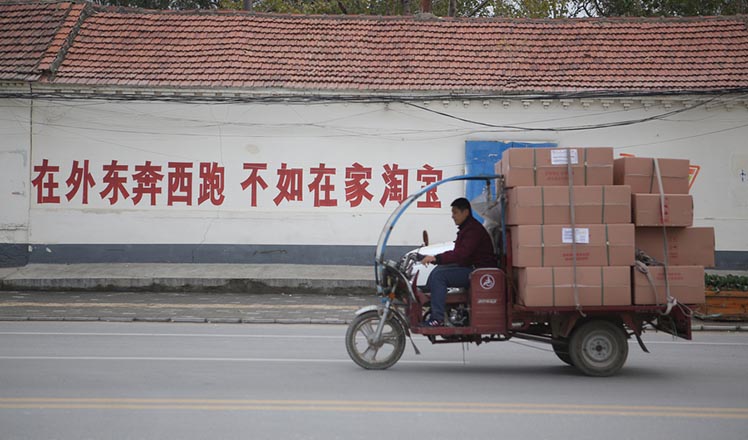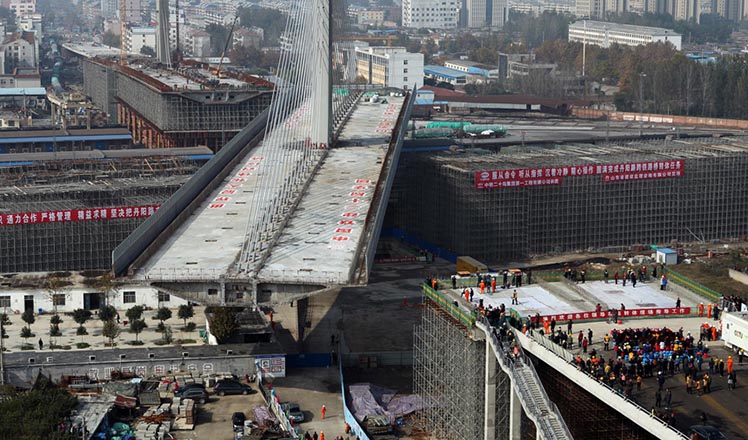Shared development as the last concept
Updated: 2016-11-12 07:57
By Robert Lawrence Kuhn(China Daily)
|
||||||||
Why is "Shared Development" the fifth and final of the Five Major Development Concepts - President Xi Jinping's guiding strategy to transform China? After all, China cannot realize its overarching goal of becoming a "moderately prosperous society" until poverty is eliminated and economic and social imbalances are reduced. Nowhere is this need more acute than in healthcare, a focus of reform.
To investigate the Five Major Development Concepts, I spent a week in Northwest China's Qinghai province - Xining the capital and Yushu in the Tibetan autonomous prefecture - meeting people, from senior provincial officials to hospital administrators to village doctors.
China still has about 50 million people living in poverty. Qinghai is one of the poorest provinces - 15 of its 48 counties are below the national poverty line. Compounding the problem, its population is less than Chicago's but its area is larger than France's, Qinghai's vast rural areas of 700,000 square kilometers are home to half of its 5.8 million people, most of whom are ethnic minorities. Many still live on the grasslands, herding cattle and horses.
Qinghai's rural people enjoy few benefits of modern urbanization, especially healthcare. Locally, shared development means urban areas helping rural areas. Nationally, shared development means developed regions helping less-developed regions. I saw both kinds of sharing at work in Qinghai.
To eliminate poverty, the government implemented, in 2009, a series of measures aimed at providing affordable, easy-to-access healthcare services. Healthcare now takes up more than 7 percent of Qinghai's GDP; in other provinces it accounts for only about 5 percent.
Today, 98 percent of Qinghai residents have universal healthcare coverage. For government subsidy recipients, the coverage could reimburse as much as 95 percent of their medical costs. A new emergency response system and telemedicine utilize latest technologies.
However, for some Qinghai residents, providing quality healthcare is challenging. This is especially true for highland herdsmen, who live in tents and have no modern appliances, not even radios or televisions. That's where help from other sectors of society comes in.
Foundations and individuals from all walks of life come to Qinghai to donate, contribute, assist and invest. Exemplifying shared development, more-advanced provinces and municipalities, such as Shanghai, are assigned by the central government to help Qinghai's autonomous prefectures.
The most daunting problem is a shortage of doctors at the grassroots level. According to Qinghai healthcare standards, there should be two general practitioners per 10,000 residents. By this standard, a single doctor working in rural areas would have to cover an area of 1,200 sq km.
The government pays doctors' salaries through a multi-level structure that transfers and allocates national tax revenues. In addition to healthcare, fiscal transfer payments cover poverty-reduction programs, equal and affordable educational opportunities, environmental protection, and targeted infrastructure development for China's less developed geographic regions, social classes and ethnic groups.
China's government says that it can effect continuous and robust poverty relief, which requires strategic consistency, because the CPC maintains long-term political power. It's an argument.
Sharing is a way of thinking. It begins by taking seriously society's responsibility for its poorest and most vulnerable members, and it operates at all levels. That's why healthcare in Qinghai is a microcosm of shared development in China.
Shared development is the last of the Five Major Development Concepts not because it is least important, but because it requires the prior success of the previous four concepts - innovative development, coordinated development, green development, and open development. A society needs robust resources to help its poor.
Only when poverty is eliminated and socioeconomic imbalances are reduced will the Five Major Development Concepts have fulfilled their mission. The target date is 2020, when the advent of a "moderately prosperous society" would mean that the first part of the Chinese Dream has been realized.
The author is a public intellectual, political/economics commentator, and international corporate strategist, and the host of Closer to China with R.L. Kuhn on CCTV News (Sundays at 9:30 am and 9:30 pm).
(China Daily 11/12/2016 page5)
- Online shopping frenzy sparks trash concern
- Is it a thing? 10 odd jobs where you can make good money
- Message on a bottle: Mineral water company launches drive to find missing children
- Snow leopards caught on camera
- A foreigner's guide to Singles Day shopping spree
- China jails 49 for catastrophic Tianjin warehouse blasts
- Americans want to change presidential election system
- UK business calls for exclusive visa system for post-Brexit London
- Australia poised to sign refugee deal with United States: media
- Philippines' Duterte says he is against 2014 defense pact with US
- S.Africa wants to work with US in promoting peace: Zuma
- Trump's victory on global pages

 Alibaba breaks sales record on Singles Day
Alibaba breaks sales record on Singles Day
 Ten photos from around China: Nov 4-10
Ten photos from around China: Nov 4-10
 Snow storm hits Xinjiang
Snow storm hits Xinjiang
 Clinton concedes election, urges open mind on Trump
Clinton concedes election, urges open mind on Trump
 Places to enjoy golden gingko tree leaves
Places to enjoy golden gingko tree leaves
 Taobao village gets ready for shopping spree on 11/11
Taobao village gets ready for shopping spree on 11/11
 Overhead bridge rotated in East China's Shandong
Overhead bridge rotated in East China's Shandong
 The 75th anniversary of Red Square parade celebrated
The 75th anniversary of Red Square parade celebrated
Most Viewed
Editor's Picks

|

|

|

|

|

|
Today's Top News
No environmental shortcuts
US election rhetoric unlikely to foreshadow future US-China relations
'Zero Hunger Run' held in Rome
Trump outlines anti-terror plan, proposing extreme vetting for immigrants
Phelps puts spotlight on cupping
US launches airstrikes against IS targets in Libya's Sirte
Ministry slams US-Korean THAAD deployment
Two police officers shot at protest in Dallas
US Weekly

|

|







